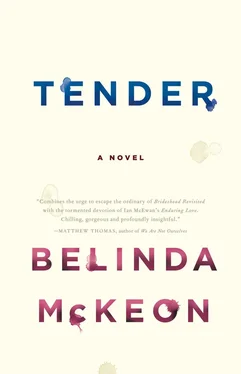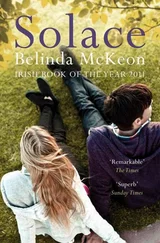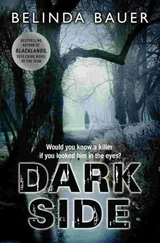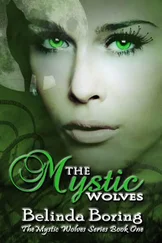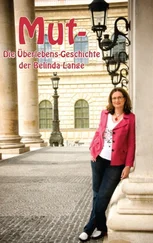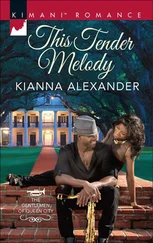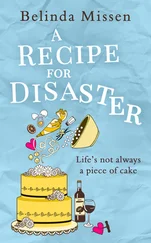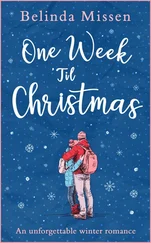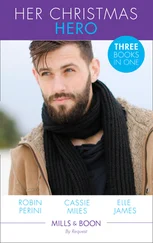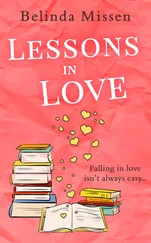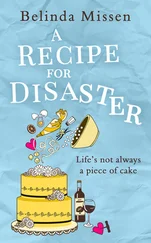“That’s what it’s called,” Alice said, offering her the iPad. “From which—”
“Let me see that,” Catherine said, taking it, and Alice held up her hands, as though to protest that she had been giving it to Catherine anyway.
From which (I did not know), Catherine, 1998, the description read. Catherine pinched it with thumb and index finger, enlarging it, as though to test it, as though to make it somehow more real. The words grew huge against the white background; they seemed to come closer to her, until there was space only for know on the screen. Catherine stared at it. She looked back to the photo, to the cheap wooden frame around the moment of which she had no memory. How could she not remember him taking that photograph? How had it slipped so completely from her store of things, when what it had been made of — James’s eyes fixed on her while she had her eyes fixed on him — had been what she had wanted so badly?
“It’s kind of strange, the way the brackets are,” Alice said, sounding a little nervous.
“I know what it means,” Catherine said.
Alice waited a moment but then, realizing that there would be no further explanation, she nodded and took a step back.
There were eight or ten other portraits in the gallery, Catherine saw now, looking around; Liam was there on the adjoining wall, the photo of him that James had taken in the hospital. She had seen it before; she forced herself now, to look at it, not to look away from it. She looked at the pillow on which his head rested, and she looked at the softness of his hair, and she looked at his skin, his young, perfect skin, and she looked at his eyes again, and she looked at the bandages on his neck and on his shoulders, and she looked at his hands. Her heart was pounding. Behind her, Alice was saying something, but Catherine did not know what it was. An adjective; it was always an adjective. As though an adjective could come close to this. As though an adjective could come close to any of them. Then she looked more closely, Catherine did, and she saw something she had not seen before, and she realized why the angle of the photograph seemed crooked somehow, seemed somehow haphazard; it was because the photographer was holding the camera only with his right hand, and because his left hand was covering Liam’s; it was because that was the photographer’s thumb, the photographer’s index finger, there, in the bottom corner of the photograph, laid over Liam’s hand. And that was why the frame was so tight. That was why the lens was so near. That was what explained that look in Liam’s eyes.
Catherine heard Alice clear her throat now, and say something, and as she glanced her way she saw how Alice’s expression jolted and then hesitated at the sight of Catherine’s tears.
“I’m sorry?” Catherine said, wiping them away. “I’m sorry, did you say something to me?”
Alice smiled apologetically. “I was just asking whether you had any questions.”
Catherine shook her head. “No questions,” she said, and she turned to look at the other faces in the room. “No questions at all.”
My thanks to Peter Straus, Anna Stein, Paul Baggaley, Kris Doyle and Lee Boudreaux.
Huge gratitude to my first readers John Butler, Michele Woods, Jamila-Khanom Allidina, Philip Coleman, Mark Doten and Kimberly King Parsons.
And to Aengus: thank you for this and all the rest.
Permissions Acknowledgments
Grateful acknowledgment is made to the following:
The epigraph on page vii is from Light Years by James Salter; it appears here with the author’s permission.
The phrase “Dreams fled away” is extracted from Thomas Kinsella’s poem “Another September” and appears here with his permission.
The extract from “The Planter’s Daughter” by Austin Clarke on page 52 is reproduced from his Collected Poems (Carcanet Press Limited, 2008).
Part of the exchange between Catherine and James on page 125 refers to a refrain in the animated TV show Pinky and the Brain .
“You’re terrible, Muriel” is a reference to the 1994 film Muriel’s Wedding, written by P. J. Hogan.
The 1998 Trinity College Dublin Department of English examination paper on Romance appears here with the permission of the copyright holder, Trinity College Dublin, the University of Dublin.
Extracts from “Blue Moles,” “Morning Song,” “Nick and the Candlestick,” “The Rabbit Catcher” and “Tulips” are taken from Collected Poems © Estate of Sylvia Plath and reprinted by permission of Faber and Faber Ltd.
Extracts taken from “Child’s Park,” “18 Rugby Street,” “Epiphany,” “9 Willow Street,” “Robbing Myself,” “The Rabbit Catcher” and “Wuthering Heights” are taken from Birthday Letters © Estate of Ted Hughes and reprinted by permission of Faber and Faber Ltd.
Lyric excerpt of “Exit Music (For A Film)” by Radiohead. Written by Philip James Selway, Jonathan Richard Guy Greenwood, Edward John O’Brien, Thomas Edward Yorke and Colin Charles Greenwood. Copyright © 1997 Warner/Chappell Music Ltd. Reprinted by Permission of Alfred Music. All Rights Reserved.
Lyric excerpt of “Shine” by David Gray. Copyright © 1993 by Warner/Chappell Music, Inc., Universal Music Publishing Group. Reprinted by Permission of Alfred Music. All Rights Reserved.
Lyric excerpt of “Lucky” by Radiohead. Written by Mark P. Dombroski, Philip James Selway, Edward John O’Brien, Jonathan Richard Guy Greenwood, Thomas Edward Yorke, Colin Charles Greenwood. Copyright © 1997 Warner/Chappell Music Ltd. Reprinted by Permission of Alfred Music. All Rights Reserved.
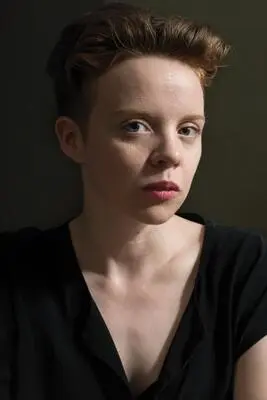
Belinda McKeon’s debut novel, Solace, won the 2012 Faber Prize, was voted Irish Book of the Year, and was shortlisted for the James Tait Black Memorial Prize. Her essays and journalism have been published in The Paris Review, the New York Times, The Guardian, and elsewhere. She has had plays produced in Dublin and New York, and is under commission to the Abbey Theatre. McKeon was a nominee for the inaugural Laureate for Irish Fiction post. She lives in Brooklyn and teaches at Rutgers University.
